From garments to canvas, Alex Foxton takes on figurative expression of the male body into a deep dialogue of shapes and colors. Ignoring any predetermined methods of composition and form, the artist delves into an array of research (documentary propaganda, fashion imagery, art history, movies) that expresses the male figure in all its glory with a touch of commentary in the way in which we create and deconstruct the body in the day to day. Read on to learn more about the artist and his current exhibition at Galerie Derouillon, Paris.
Tell us a little bit about yourself. Where are you from and how did art first come into your life?
I’m from the east of England but I’ve lived in Paris for 14 years. I’ve been drawing since I can remember, and I started painting about four years ago. It started on the side of my kitchen table and eventually took over my life.
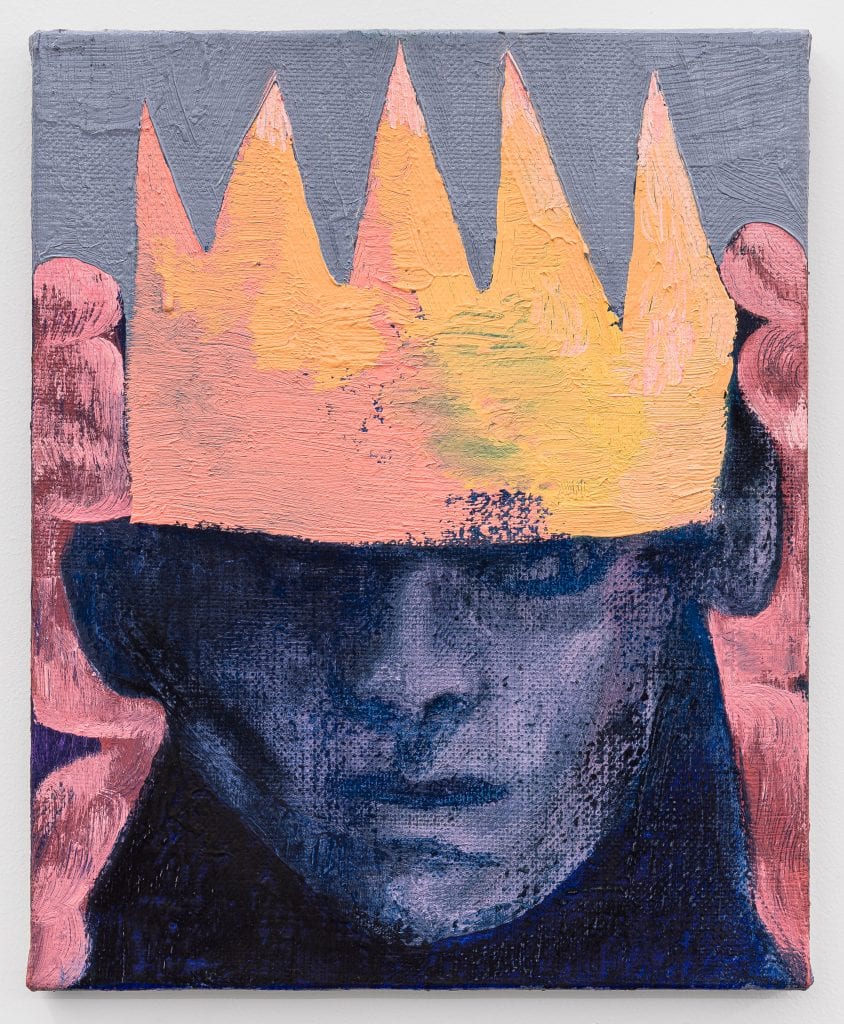
![]() Courtesy of the artist and Gallerie Derouillon, photographer Gregory Copitet
Courtesy of the artist and Gallerie Derouillon, photographer Gregory Copitet
Has your work always taken on the style it currently embodies? Where have you seen the most change in your artistic style?
I think I’ve got a bit looser but otherwise it has been quite consistent. Style seems to be the bit that you can’t fundamentally change. It’s so tied up with your limits and the way you are as a person. Where my work has changed is in the subject matter which was more personal to begin with but quickly became about male archetypes, the male figure and image.
What is the first thing you do when you start a work? What is your process like?
I do a lot of image research. From that I make hundreds of drawings which are not really finished works but more like notes. It’s like a bank of faces and gestures that I use to make the paintings. But I almost never work directly from a drawing, nothing is tightly planned.
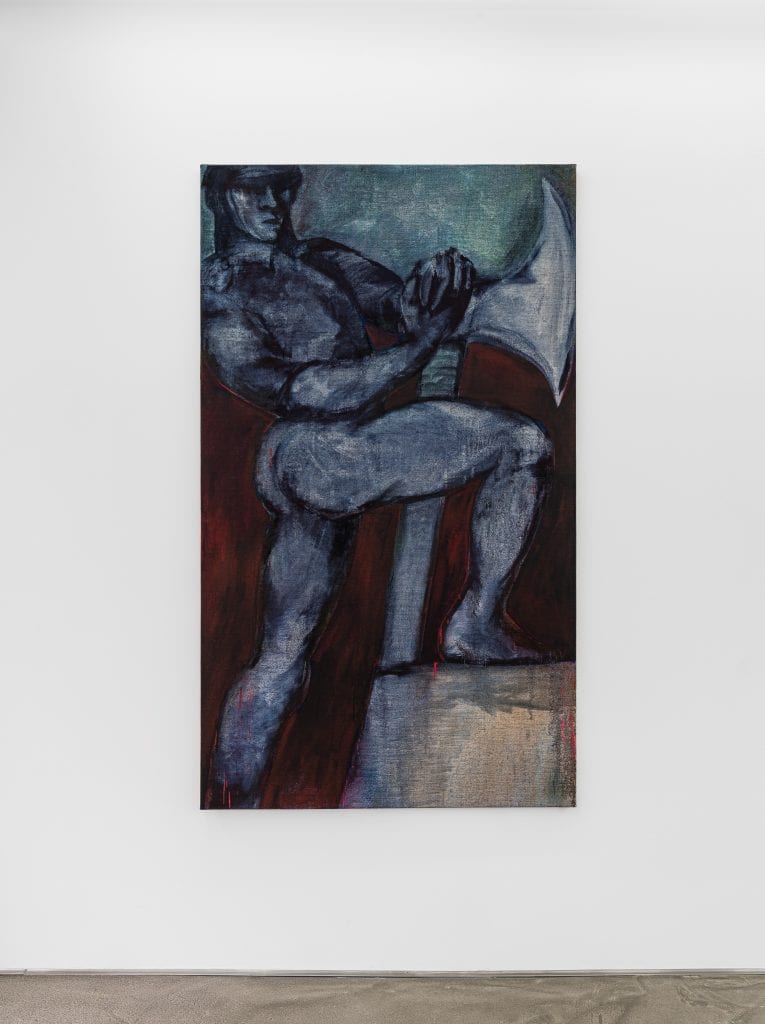
Courtesy of the artist and Gallerie Derouillon, photographer Gregory Copitet
Walk us through a day in the studio.
It’s very simple. I arrive at around ten, I work until lunch, I usually go out for lunch in a restaurant, then I return and work until 7 or 8, or if it’s really going well I’ll stay later.
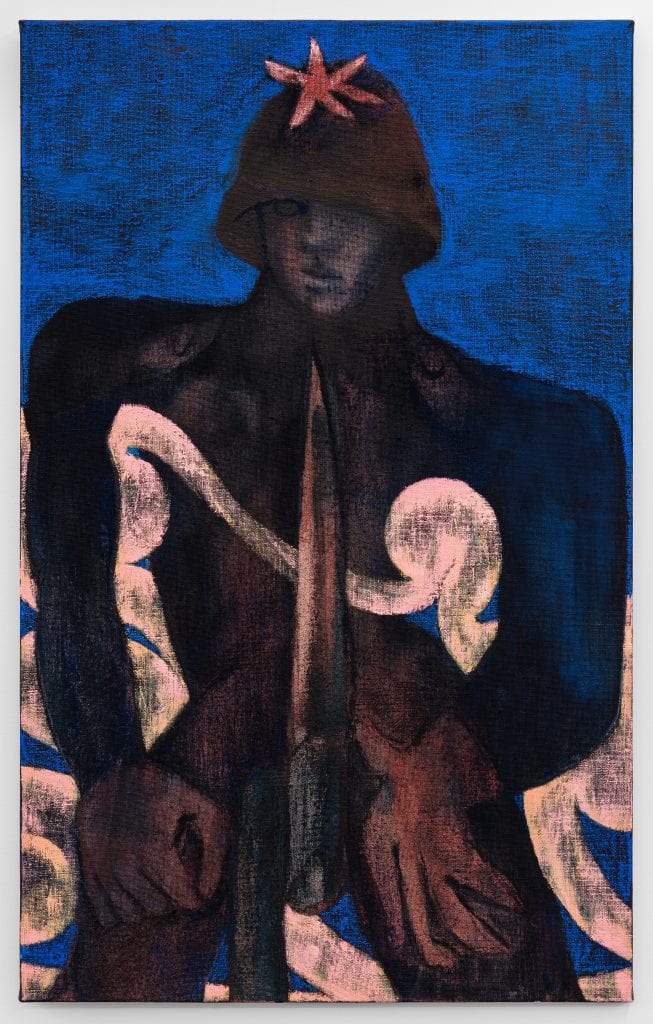
Courtesy of the artist and Gallerie Derouillon, photographer Gregory Copitet
From where do you draw your inspiration?
Documentary photography, propaganda, fashion imagery, art history, movies.
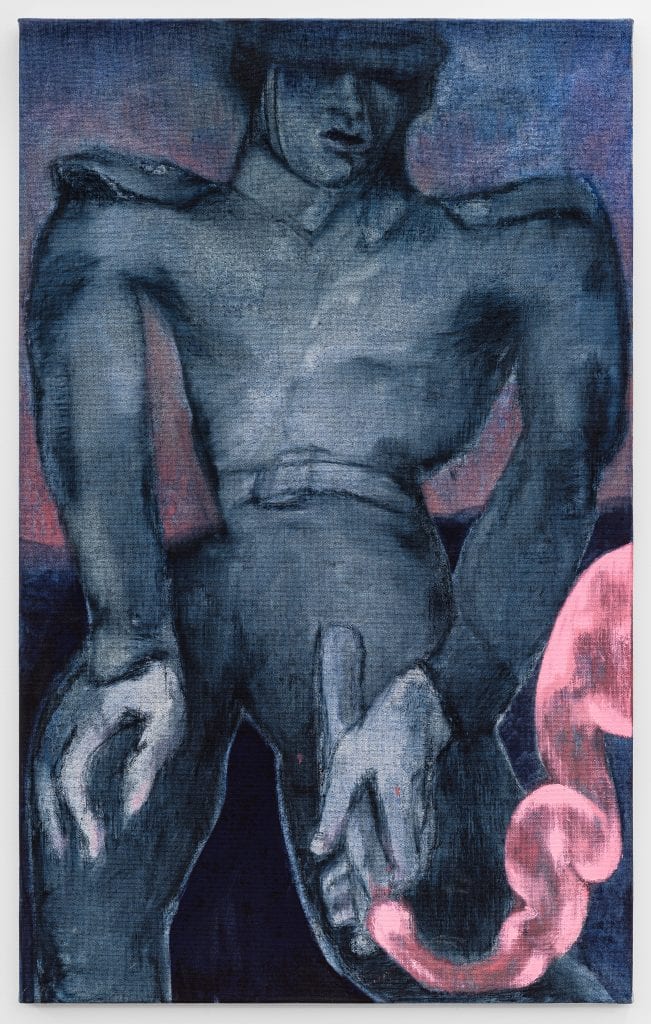
Courtesy of the artist and Gallerie Derouillon, photographer Gregory Copitet
Your paintings have a very intense contrast in color palettes. Could you tell us a bit about that? What are you looking to communicate?
Colour is a mystery to me. It’s not like a tool where you think, I want to make a joyful painting, so I’ll use yellow. It’s more instinctual. I don’t know why I use certain colours, it’s more often that there’s no choice, they just seem to assert themselves.

Courtesy of the artist and Gallerie Derouillon, photographer Gregory Copitet
What can you say about the current racial tensions around the world, do you see your work playing a role in what is currently happening?
I don’t think an art gallery is the site for societal progress. I do think art will mirror what is happening, though I can’t tell you how.
The only way in which I see my work as political is as part of a conversation about masculinity. In my wildest dreams I would help to diffuse a more self-aware idea of masculinity, as constructed and performed as what we typically think of as femininity.
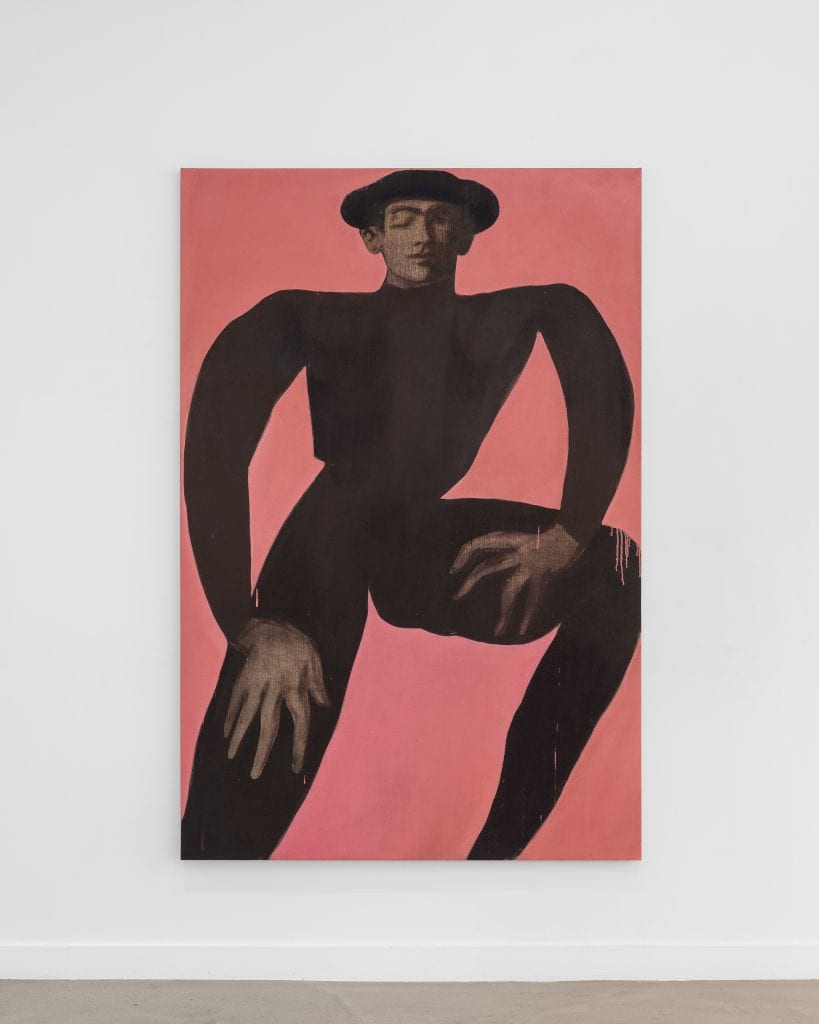
Courtesy of the artist and Gallerie Derouillon, photographer Gregory Copitet
If you could have dinner with three renowned artists, dead or alive, who would it be?
Dinner with three famous artists sounds mega stressful, but I would go for Picasso, Velázquez and Yoko Ono, they’d at least be fun. Velázquez was the king’s decorator and obviously had amazing taste so he could choose the setting.

Courtesy of the artist and Gallerie Derouillon, photographer Gregory Copitet
What’s next for you?
A book of my work, and an exhibition in the new year.

Installation view, courtesy of the artist and Gallerie Derouillon, photographer Gregory Copitet ![]()
At the end of every interview we like to ask artists to recommend a friend whose work you love and would like us to interview next. Who would you suggest?
Louis Fratino